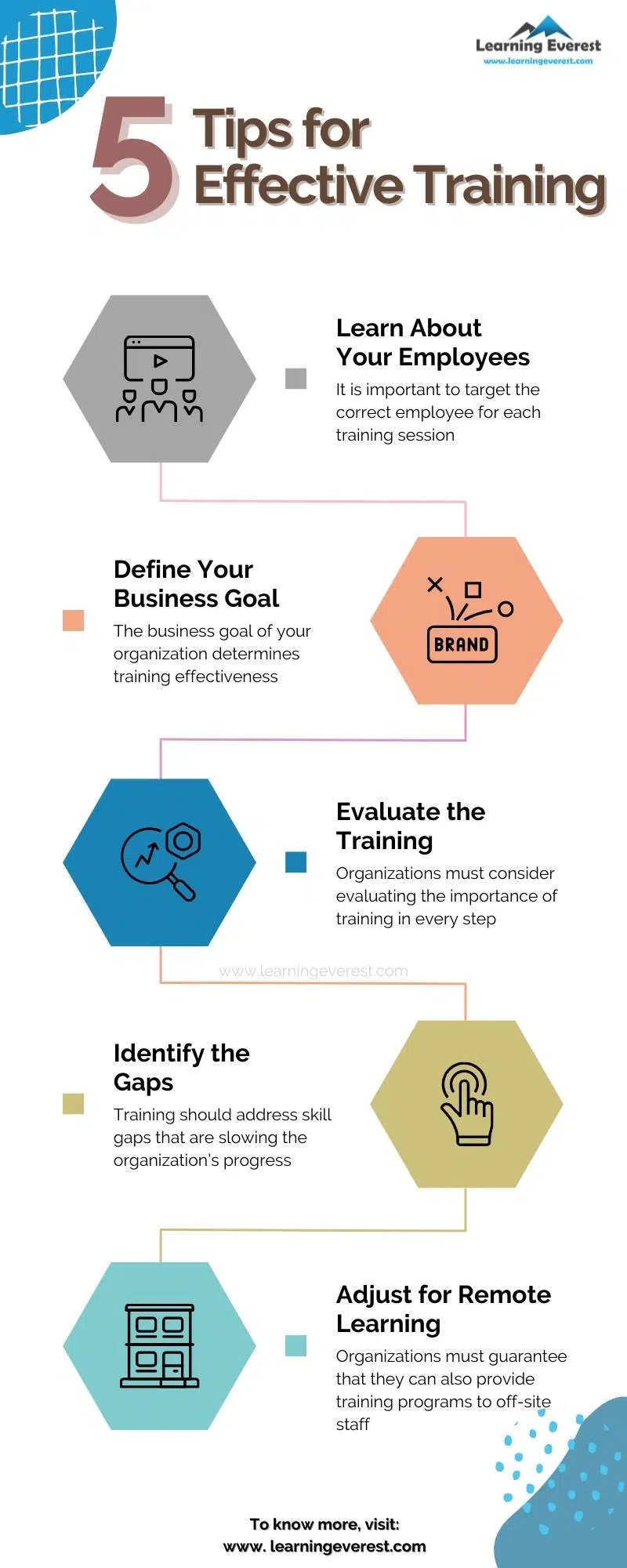Wondering about the importance of training. The subject of corporate training and development has become even more significant with the increase in competition in every field of business today. Corporate training and development play a vital role in an organization’s long-term growth. According to the Association for Talent Development (ATD), organizations that offer wide-ranging training programs have 218% higher revenue per employee than organizations without formalized training!
Table of Contents
- What is employee training?
- What are the different types of training programs?
- How do we provide effective training to the employees?
- 8 Benefits of employee training and development
- Knowledge Check
- Infographics
- Conclusion
- Frequently Asked Questions (FAQs)
- What is the importance of employee training?
- What is effective training?
- What are the 3 methods of training?
- What is the difference between training and development?
According to the Association for Talent Development (ATD), organizations that offer wide-ranging training programs have 218% higher revenue per employee than organizations without formalized training!
Interesting, right?
Now, please keep reading to learn more about the importance of training in the workplace and its key benefits.
What is employee training?
Employee training and development is a systematic device for an organization’s continuing growth, productivity, and ability to retain valuable employees. Employee training is an educational program that delivers vital information for employees to use in their jobs. It helps them quickly upskill at their jobs at a faster rate.
Training occurs according to the organization’s requirements, such as a shortage of skills, implementing a new work ethic, or introducing new policies. It usually involves seminars and workshops. Some organizations also promote online training for upskilling their employees.

Training for Effective Employee Performance
What are the different types of training programs?
Implementing training for unique organizations differs in many aspects, such as business purpose, size of the workforce, and the type of activities included in the training programs. Some organizations also provide special product-specific training to their employees. But, in general, there are seven types of training available in most organizations:
- Onboarding programs
- Technical skill development programs
- Soft skill development programs
- Quality training programs
- Leadership and managerial training programs
- Mental health training programs

Different Types of Training Programs
How do we provide effective training to the employees?
Now, the importance of training employees cannot be underestimated. To create effective training opportunities, training managers should begin by acknowledging the importance of training and deciding what skills employees need to help the organization meet its objectives. Then organizations should fit their training and development strategies according to employees’ interests and learning styles. A few ways to create training and development programs that benefit organizations and their employees:
- Identify the gaps: Training managers should determine how employees’ work performance affects the organization’s progress in reaching its goals. Their training should address skill gaps that are slowing the organization’s progress.
- Select learning style: Organizations should consider factors such as employee background, preference, and experience when designing training and development programs. A few learning methods for training programs are as follows:
-
- Traditional instructor-led training
- E-learning
- Immersive learning
- Gamified learning
- Microlearning
Additional to these abovementioned methods, training managers can also decide to train their employees using online materials, such as pdfs, ppts, podcasts, interactive infographics, eBooks, HTML5 flipbooks, recorded webinars, etc.
- Adjust for remote learning: With more employees working remotely, organizations must guarantee that they can provide training and development programs that resonate with off-site staff. Tools such as videoconferences, webinars, and online LMS platforms can encourage training regardless of employee location.
- Evaluate the training effect: Training evaluation works for both the motivational and achievement needs of the employees. The assessment helps employees assess their skills and determine whether they are on track to reach the objectives. It also enables them to plan what they need to do to progress. Training evaluation even provides a break from the monotonous learning journey as well. Therefore, organizations must consider evaluating the importance of training before creating an effective training program for employees.

Strategies for Effective Employee Training
8 Benefits of employee training and development
Here are a few benefits that prove the importance of training and development in the workplace.
- Improved performance: When it comes to the importance of training for any organization, one of the main benefits is that it upskills the existing workforce by teaching new skills. Exercise helps to strengthen the employees’ capabilities while adding even more skills, which makes the workforce as strong and competitive as possible.
- Increased productivity: The importance of training lies in its potential to increase and improve workforce skills. Training improves employee performance which leads to increased productivity. Effective training can increase independence, equipping employees with adequate knowledge to do their job on their own, without having to ask for help.
- Lower employee turnover: Corporate training reduces employee turnover by improving employee engagement with the organization. Organizations with good opportunities help employees to learn new skills, acquire knowledge and develop their strengths. It encourages more engagement from their employees. Employees choose to invest in the organizations that invest in them.
- Increased job satisfaction: Training improves job satisfaction and employee morale by giving them a sense of purpose in their role and clear development opportunities. There is no doubt that organizations with higher rates of job satisfaction have better organizational performance overall.
- Drive collaboration and innovation: Training can help vulnerable employees to feel more supported, encouraging them to speak up and share their opinions. Diversity, equality, and inclusion training can generate both attitude change and skill-based change within your workforce.
- Build an inclusive workplace: Training managers can generate inclusivity training programs for their employees to take meaningful steps toward building a more respectful workplace. This type of employee training can create a meaningful shift in employees’ lives, helping to increase employee commitment and career satisfaction.
- Improve communication and collaboration: When examining the importance of training, it is essential to remember the importance of communication in any organization. Team-based training can help to improve connectedness and communication between team members. The team-focused training fosters mutual respect, understanding, and essential soft skills that allow the workforce to work together effectively. Team-focused training helps individuals develop beneficial neural, cognitive, and behavioral patterns that they do not develop individually.
- Improve customer service standards: Well-trained employees generate more potential to create a high-level customer relationship. From dealing with customer complaints to improving communication, targeted training for the customer service team can make a massive difference to the overall customer experience and satisfaction. Moreover, improved customer service fosters greater customer loyalty. When individuals create a positive experience with the brand or organization, they are more likely to become loyal customers. Employee training is one method to improve this customer loyalty by raising the training level of customer service.
Knowledge Check
Now that you understand the incredible impact of training, let’s put your knowledge to the test!
Infographics
Conclusion
To sum up, it goes without saying that training is essential for organizations of any size. A training and development program can have numerous short and long-term benefits, including increasing employee engagement and retention rates, encouraging innovative thinking, mitigating risks, and giving the organization a competitive edge. Acknowledging the importance of training, it is ideal for training supervisors to evaluate the training process and keep checking in with the trainee to see if they are comfortable with what they are doing. Whether you have a small business or a big organization, understanding the importance of training can help grow your team more effectively. If done well, it flourishes the organization eventually.
Ready to unlock the full potential of your workforce?
Explore our comprehensive training and development programs today and empower your employees for a brighter future!
Frequently Asked Questions (FAQs)
What is the importance of employee training?
A training and development program can have numerous short and long-term benefits, including increasing employee engagement and retention rates, encouraging innovative thinking, mitigating risks, and giving the organization a competitive edge.
What is effective training?
An effective training program includes multiple employment opportunities to enhance their job skills.
What are the 3 methods of training?
Three main types of training take place in the workplace: traditional instructor-led training, e-learning, and microlearning.
What is the difference between training and development?
Training is the educational program that delivers vital information for employees to use in their jobs. On the other hand, in development programs, people are provided with information, but they are not necessarily expected to use it.






